The Back Acre Program: Reduced Mowing Plan for Large Homesite Lawns
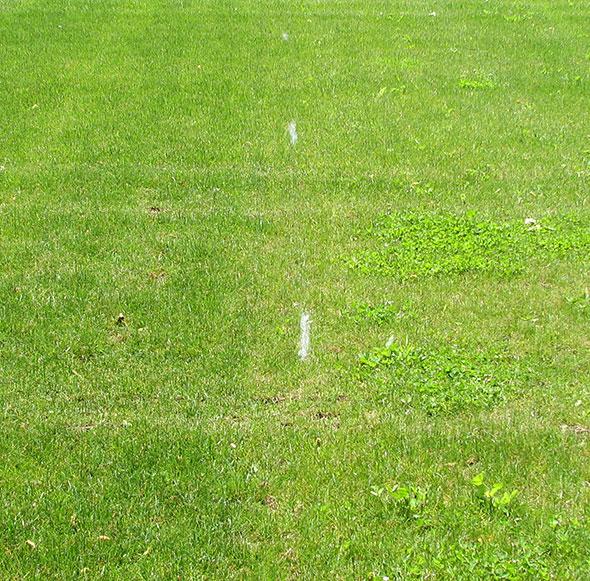
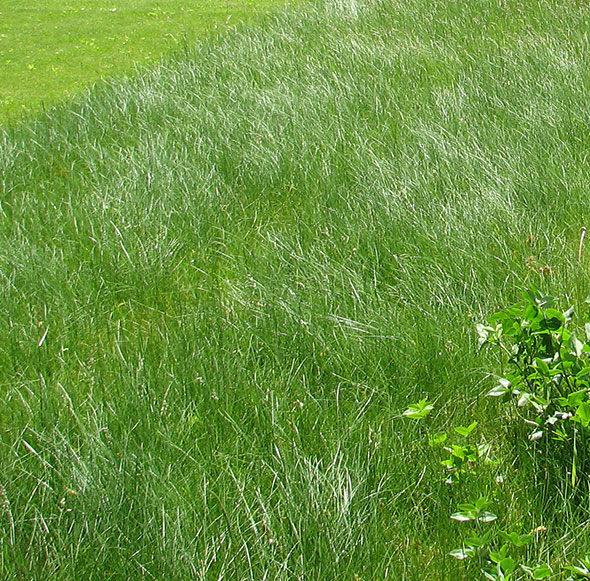
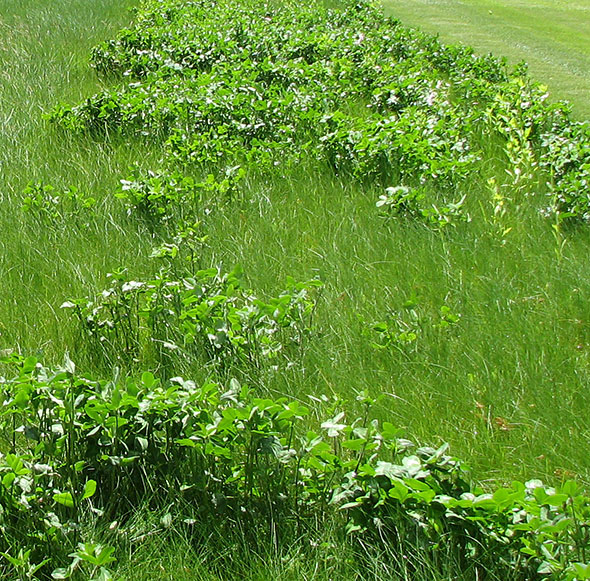
Rural townships near the Rutgers NJAES Snyder Research & Extension Farm developed master plans requiring single-family housing to be placed on large, generally multi-acre homesites to reduce environmental impact on township resources including water, sewerage, etc. These large homesites are generally three to ten times larger than the typical New Jersey lawn.
Managing a large lawn requires a substantial amount of time and money utilizing traditional lawn care management programs. In an effort to reduce the management effort for large rural homesites, Snyder Research Farm implemented demonstration trials for rural homesite homeowners to observe with a focus on reducing lawn care management.
A program nicknamed "The Back Acre Program" was developed for homeowners to consider. It constitutes utilizing low-maintenance turfgrasses combined with a reduced mowing management of approximately 4 times per year rather than the traditional 18 to 22 mowings. The lawn areas would be the more remote parts of the property not routinely utilized. However these areas can be recovered by more frequent mowing as needed, such as for picnics and recreation.
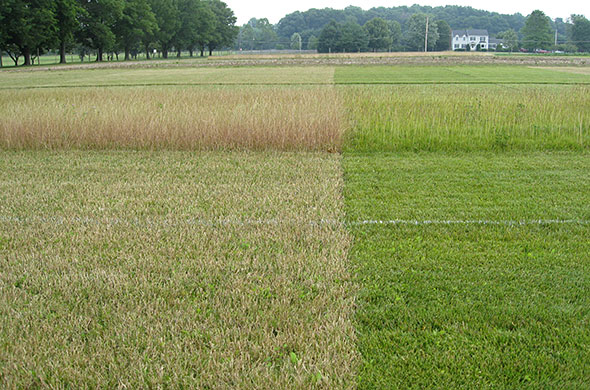
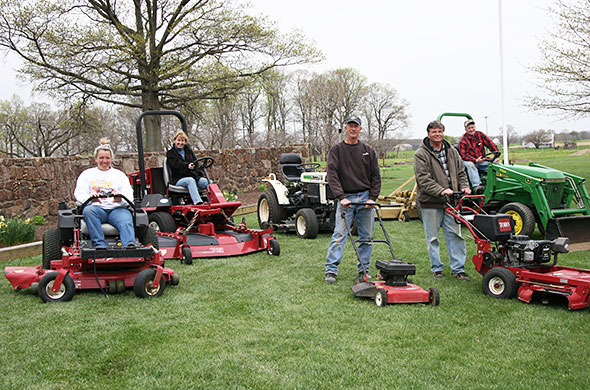
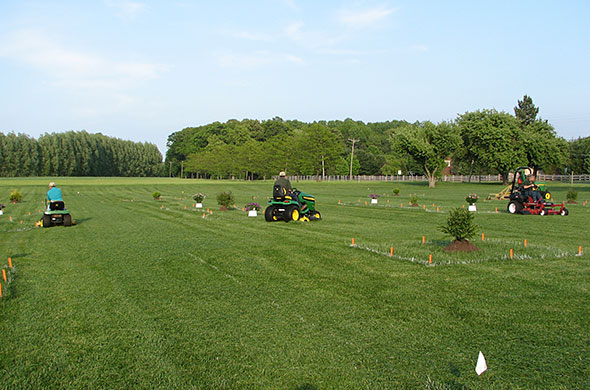
For large homesites, purchasing a lawn mower should be a thought out decision similar to automobile purchase considering time, budget, lawn size, and maneuverability. It might make economic and free-time sense to consider commercial-quality equipment.
Several considerations when mowing large lawns: maneuverability to reduce trimming, width of cut, dual-purpose such as tractor with mower attached, budget, and maintenance cost.
Fertilizer and Liming Considerations for Large Homesites
Homeowners managing large lawns have special challenges regarding equipment selection and economics.
Homesites of one to several acres can require the addition of lime and fertilizer in the range of hundreds to thousands of pounds. For instance, a soil test result calling for 1000–2000 pounds of lime per acre is not be unusual. Fertilizers would be much lower quantities especially in consideration of New Jersey fertilizer legislation. For more information, see NJDEP's Healthy Lawns Healthy Water website.
Purchasing fertilizer and liming equipment for the do-it-yourself homeowner requires thoughtful consideration of equipment budget versus cost savings for applications on a large scale.
A commercial-quality, push-type fertilizer spreader can cost several hundred dollars, but will have many significant features allowing for relative ease of fertilizing 1+ acre lawn sites and should give the owner many years of service. Large pneumatic tires and stainless steel and high-impact corrosion-resistant construction allow for a large hopper and provide spreading widths much greater that homeowner-grade, small-hopper spreaders.
Making a decision whether to purchase a push spreader or spreader attached to motorized equipment requires a few considerations: maneuverability around landscaping (push-type spreaders are more maneuverable), size of lawn, physical capability, etc.
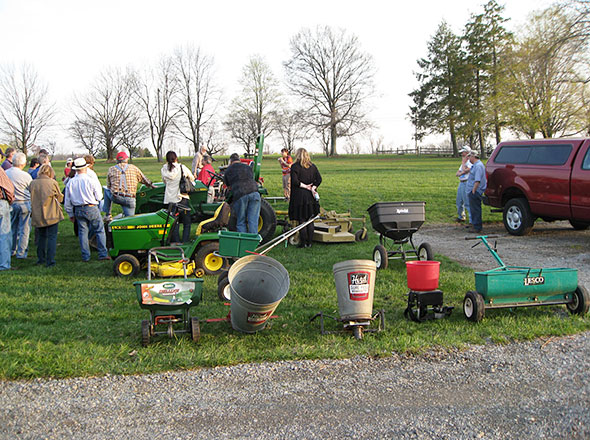
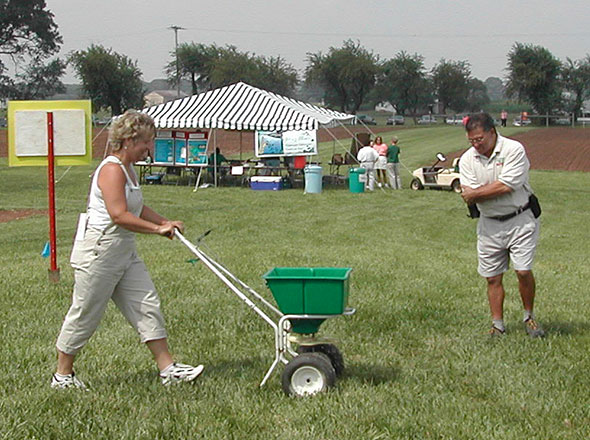
A Brief Note on Liming
Application of lime has several benefits enhancing the health and attractiveness of turfgrass. Many times a soil test indicates 1000 to 2000 pounds of lime should be applied per acre. In 50-pound bags this equates to 20–40 bags. The most practical method of application would be to purchase pelletized lime rather than pulverized, since pelletized lime is easier to spread, especially with a rotary spreader. Pulverized lime generally cannot be spread with a rotary-type spreader. (Pelletized lime is pulverized lime glued together in pellets approximately the size of a BB, allowing for easier spreading.)
